Camel Stop

Beez Neez now Chy Whella
Big Bear and Pepe Millard
Tue 29 Mar 2016 21:57
|
Camel Stop 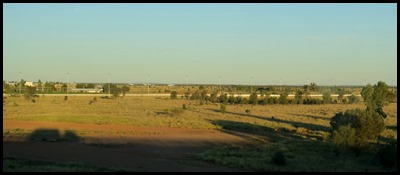 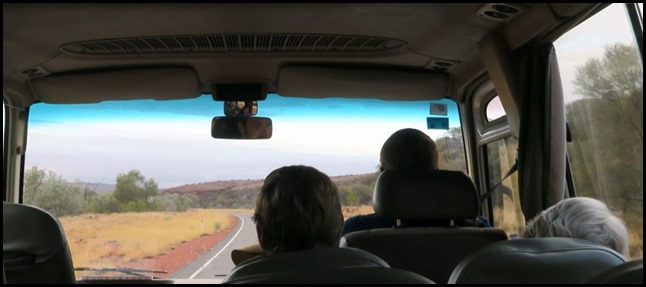 We were picked up at our motel at
05:41, the first of the group setting off with David our driver and guide. We
stopped at various hotels, motels, hostels and backpacker establishments around
Alice Springs until the bus was full. Soon after leaving the relative green of Alice we were out in the
‘countryside’ - the scenery turned a pinkish red.
Our first stop would be an hour and a half away for breakfast.
  Our route
during our three day, two night tour. Our first and last
rest stop at Camel Farm.
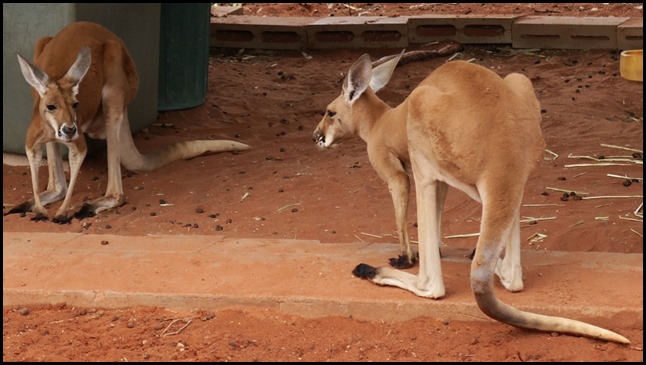 Bear went in to order us cups of tea and bacon sandwiches, I went
outside to meet our first ‘big reds’. The shop
sold Afghan biscuits the size of side plates, one each in case we need a snack
later – well that’s our excuse.
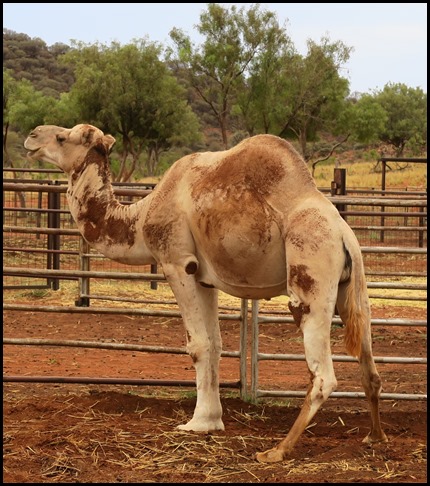 One of the camels
looking pretty red after a roll.
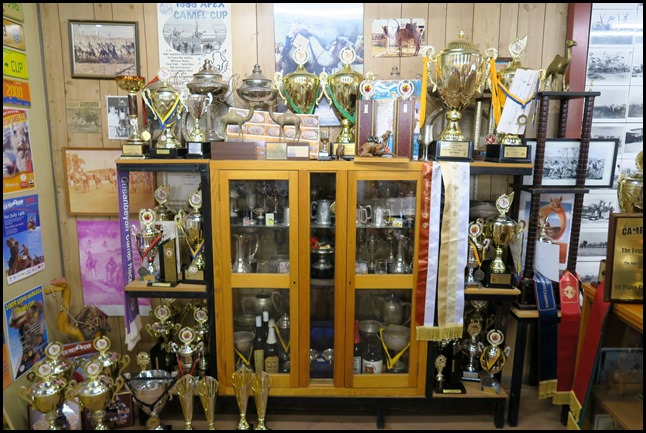 Back inside there were so many awards
the owner had won.
 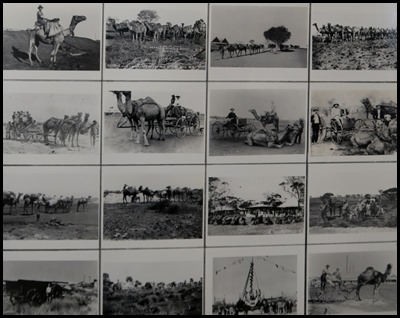 Some wonderful old
pictures and some history.
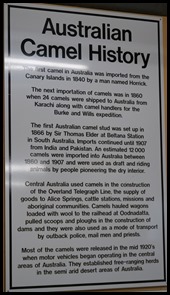 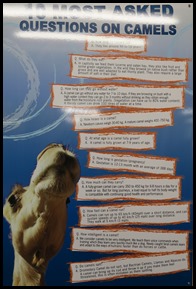 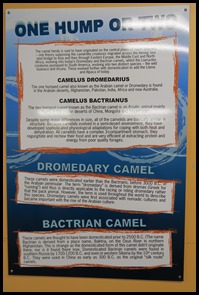 Australian Camel
History: The first camel in Australia was imported from the Canary
Islands in 1840 by a man named Horrick. The next importation of camels was in
1860 when 24 camels were shipped to Australia from Karachi along with camel
handlers for the Bourke and Wills expedition.
The first Australian camel stud
was set up in 1866 by Sir Thomas Elder at Beltana Station in South Australia.
Imports continued until 1907 from India and Pakistan. AN estimated 12,000 camels
were imported into Australia between 1860 and 1907 and were used as draft and
riding animals by people pioneering the dry interior.
Central Australia used camels in
the construction of the Overland Telegraph Line, the supply of goods to Alice
Springs, cattle stations, missions and Aboriginal communities. Camels hauled
wagons loaded with wool to the railhead at Oodnadatta, pulled scoops and ploughs
in the construction of dams and they were also used as a mode of transport by
outback police, mail men and priests.
Most camels were released in the
mid 1920’s when motor vehicles began operating in the central areas of
Australia. They established free-ranging herds in the semi-desert areas of
Australia.
   Camel
distribution
The ten most
asked questions on camels:
Q. How long does a camel live?
A. They live around 40 to 50
years.
Q. What do they
eat?
A. In captivity we feed them
lucerne and oaten hay, they also like fruit and some green vegetables. In the
wild they browse on native bush rather than grass and are well adapted to eat
thorny plant. They also require a large amount of salt in their
diet.
Q. How long can a camel go
without water?
A. A camel can go without water
for 7 to 10 days. If they are browsing on bush with a high water content they
can go 2 to 3 months without drinking as they obtain enough water from the
moisture rich plants. (vegetation can have up to 80% water content). A thirsty
camel can drink 100 litres at a time.
Q. How heavy is a
camel.
A. Newborn calves weigh 30-40
kilograms. A mature camel weighs 400-750 kilograms.
Q. At what age is a camel fully
grown?
A. A camel is fully grown at 7-9
years.
Q. How long is gestation
(pregnancy)?
A. Gestation is 12 to 13 months
with an average of 388 days.
Q. How much can they
carry?
A. A fully grown camel can carry
350 to 450 kilograms for 6-8 hours a day for a week or so. But for long
journeys, a load equal to half its body weight is compatible with continuing
good health and performance.
Q. How fast can a camel
run?
A. Camels can run up to 65
kilometres an hour (40 mph) over a short distance, and can sustain speeds of up
to 40 kilometres an hour (25 mph) over long distance. They walk at 5 kilometres
an hour (3 mph).
Q. How intelligent is a
camel?
A. We consider camels to be very
intelligent. We teach them voice commands when training which they learn very
quickly much like a dog. Newly caught feral camels learn and adapt to the ways
of humans faster than horses or cattle.
Q. Do camels
spit?
A. Dromedary Camel do not spit,
but Bactrian Camels, Llamas and Alpaca do. A camel can bring up its cud and
throw it up if you make them feel threatened, this is often mistaken as them
spitting.
We did the one
hump or two in blogs during our stay in Morocco.
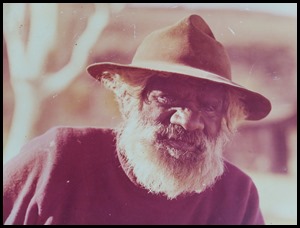 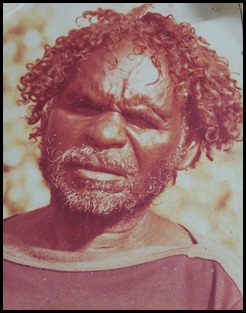 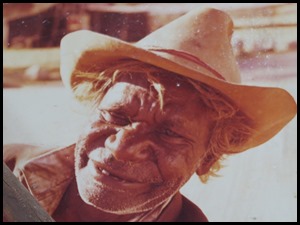 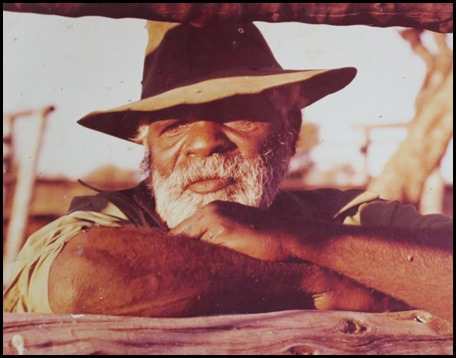 Some wonderful
faces.
 An
Advertisement.
 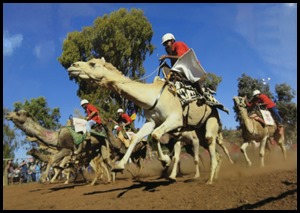  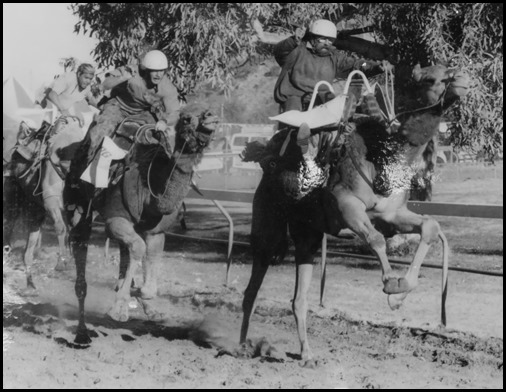 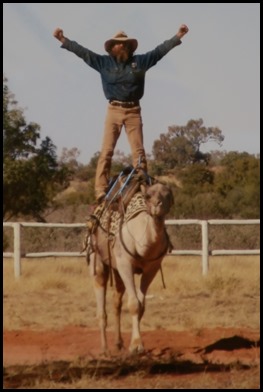 Some impressive
action shots.
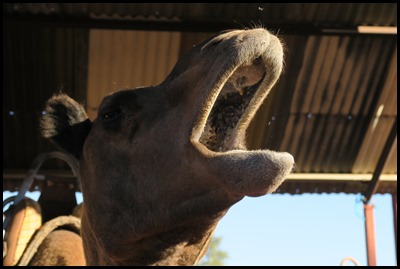 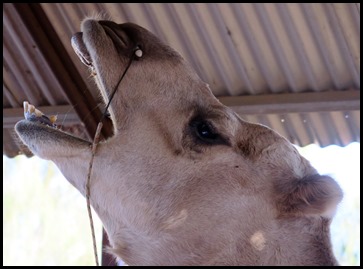 We only just made the return journey stop walking in with minutes to spare. Our
friends were tired and were actually yawning.
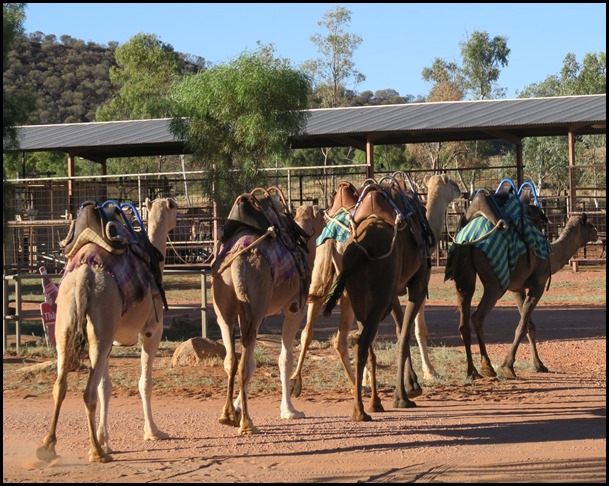 Armed with cups of
tea and of course a couple of big biscuits, we watched as the team were taken to have their supper and
bed.
Back in Alice Springs, we passed The Old Ghan Train.
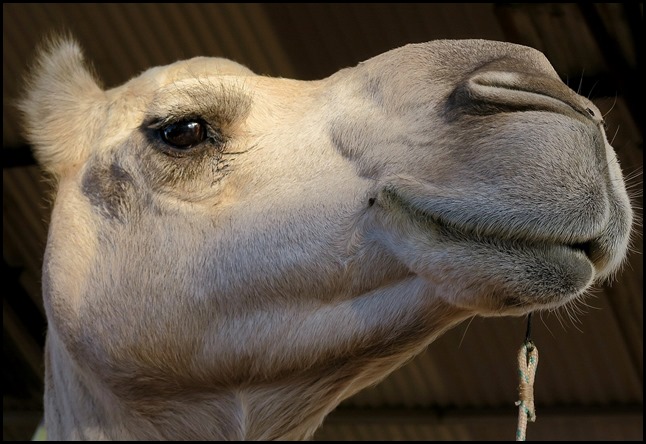 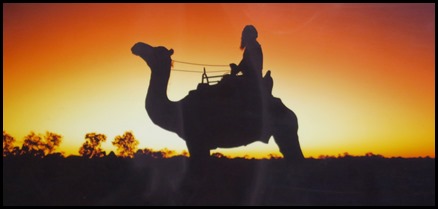 ALL IN ALL WHAT
A WONDERFUL ROAD TRIP
TIME FOR A LAY IN AFTER A GREAT
TOUR |
